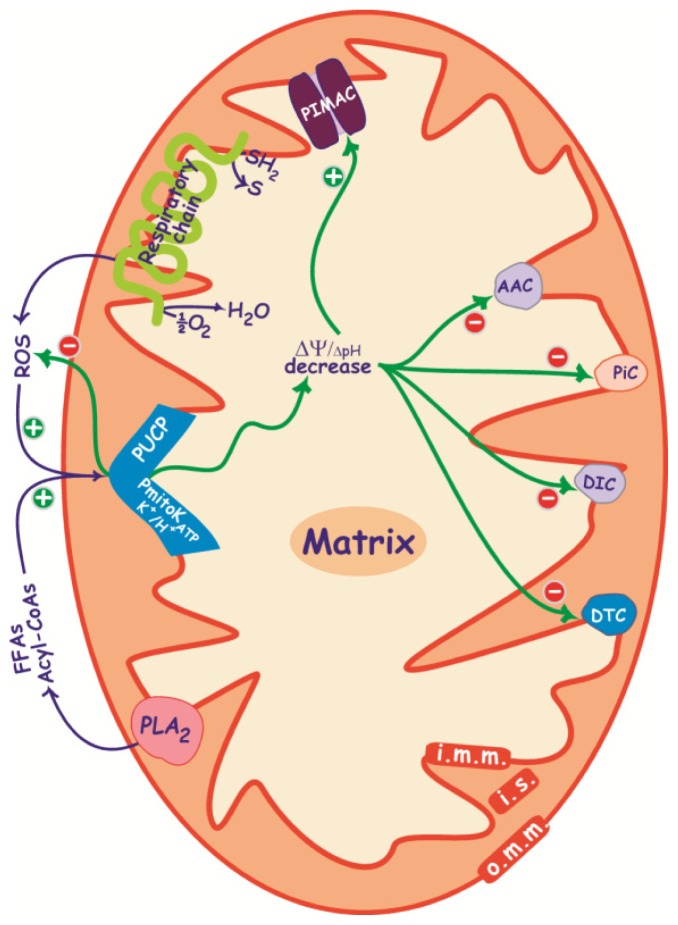Figure 2.
Effect of PmitoKATP and PUCP activity in DWM on ΔΨ/ΔpH, ROS production and other transport systems under hyperosmotic stress. Under stress an increase of FFAs due to PLA2 activity and probably of their acyl-CoA derivatives is observed, as well as an increased ROS production by respiratory chain and ATP synthesis inhibition, thus leading to PmitoKATP and PUCP activation. Once activated, both PmitoKATP and PUCP may cause ΔΨ and ΔpH decrease, which allows the prevention of further large-scale ROS production, according to a feedback mechanism. On the other side, ΔΨ and ΔpH decrease may modulate transport by impairing carriers and activating PIMAC. AAC, ADP/ATP carrier; DIC, dicarboxylate carrier; DTC, dicarboxylate-tricarboxylate carrier; PiC, Pi carrier; PIMAC, plant inner membrane anion channel; SH2, reduced substrates; S, oxidized substrates; PLA2, phospholipase A2; i.m.m., inner mitochondrial membrane; i.s., intermembrane space; o.m.m., outer mitochondrial membrane. ΔpH is represented in a smaller font size since it represents a lower component of pmf with respect to ΔΨ.

